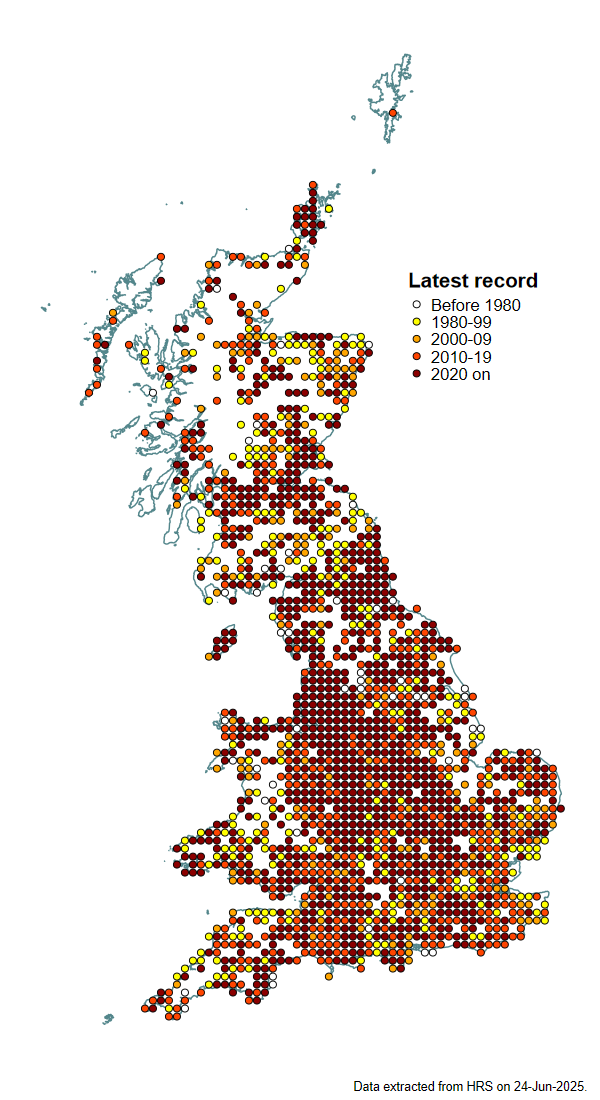Leucozona lucorum (Linnaeus, 1758)
Identification
Identification difficulty = 1. ![]()
![]() according to Ball & Morris, 20241
according to Ball & Morris, 20241
Biology
The larva preys mainly on herb layer aphids. Adults fly in dappled sunshine in situations such as woodland rides and edges, roadside verges and hedgerows, where they are often found in association with Red Campion Silene dioica and Greater Stitchwort Stellaria holostea.
Flight period
The following plots show the number of unique records per week excluding those reported to be of immature stages.

Distribution
One of the characteristic hoverflies of early spring throughout lowland Britain, with an earlier flight period than the other Leucozona species although it appears later in Scotland. There is some evidence of a partial second generation with occasional records to September.

Trends
The following plots show the Frescalo TFactor vs year and a map of the rescaled frequency (all records) for the species.
-
Ball, S., & Morris, R. (2024). Hoverflies of Britain and Ireland. WILDGuides (3rd ed.). Oxford: Princeton University Press. ↩